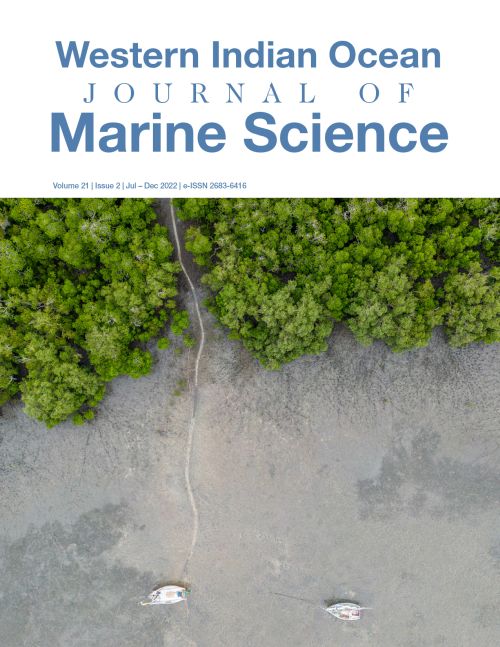Main Article Content
Free-living marine nematode communities in Rhizophora mucronata Lam. (Rhizophoraceae) forest at Mida Creek, Kenya
Abstract
Nematodes are among the most abundant organisms in marine ecosystems where they play a critical role in nutrient cycling, provision of nourishment to the higher organisms in the food web, pest control, and act as disease-causing vectors. This study determined the abundance and community structure of nematodes in three plots of Rhizophora mucronata forest stand at Kirepwe Macho and Dabaso sites at Mida Creek, Kenya. Replicated sediment samples were randomly collected from one forest plot in Kirepwe Macho and two plots in Dabaso during the months of January and April 2011. Total organic matter, sand and silt proportions were not significantly different across the study sites and between January and April. A total of 90 and 81 nematode genera were encountered in the month of January and April, respectively. At both sampling times, the nematode community was dominated by Terschellingia (20.5 % - 15.3 %) and Paracomesoma (10.6 % - 6.6 %). The Shannon-Weiner diversity index was relatively high in the three forest plots both in January and April ranging from 2.76 to 3.40. There was no significant difference in nematode community assemblage within sites (p > 0.05, 0.901) but there were differences between sampling time (p > 0.05, 0.001). The results showed that the three sites had similar nematode community structure suggesting that the three Rhizophora mucronata mangrove forest plots did not differ in terms of nematode generic composition even though the plots were not all close to each other.






